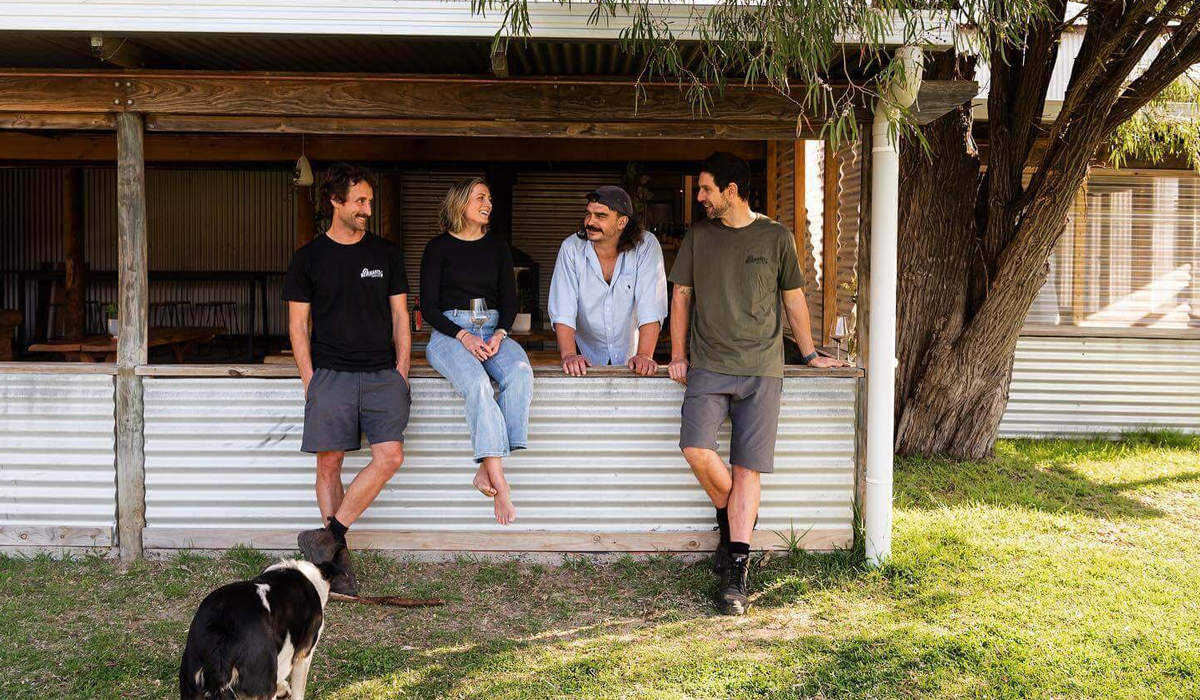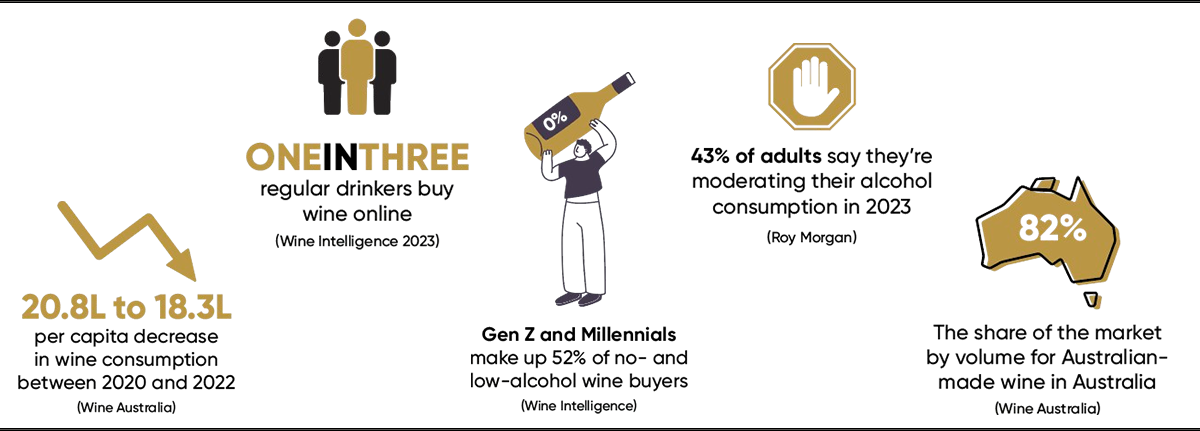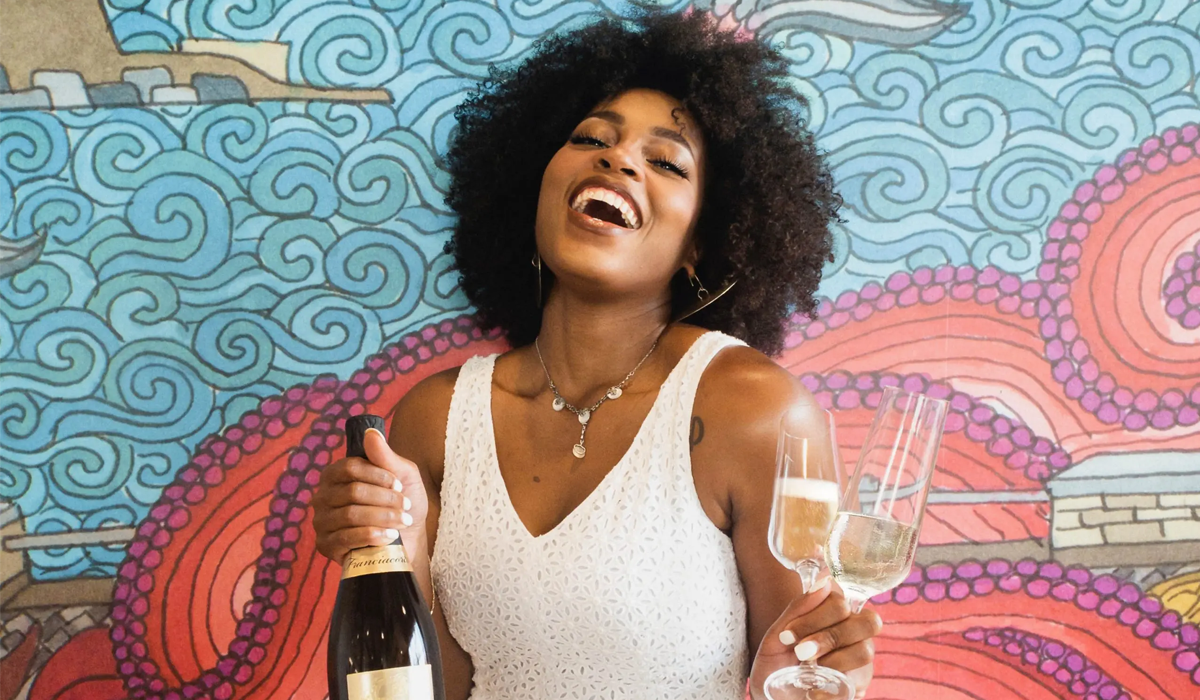Wine consumption in Australia declined by nine per cent from 2020 to 2022, equating to a reduction of around 50 million litres, according to Wine Australia’s latest market insights report. Unnerving, to say the least, and yet the decline is aligned with the top 20 wine markets globally. But how big a problem is this, and when does a trend turn into a long-term reality?
Does the Australian wine industry have a Gen Z problem?
Andrew Shedden, Endeavour Group’s (Dan Murphy’s, BWS, LANGTONS') head of fine wine, believes the situation is grim. “It is serious, and I think the wine community has a young person challenge. If we don’t address it, it becomes an existential problem. Now is the time to face it,” says Andrew, who sees several macro issues to address. “Traditionally, young people have spent less of their wallet share on wine than other categories. But over the past five years, we have seen even less than usual, and that will close the mouth of the wine enthusiast funnel.”
He adds that spirits, particularly the premix category, are now sophisticated competition. “Consumers have traditionally gone through their 20s into their 30s, and they’ve naturally transitioned to wine. We’re sitting on our laurels to think that’s going to happen. Is wine answering any question or need in young people’s occasion set that premix beer and spirits aren’t already doing? If there’s no incentive and they don’t shift to wine, it reduces the total consumption of wine by two-thirds in 30 years’ time.”
Andrew highlights the medium- to long-term liquor trends that the wine industry faces as product innovation, more health-conscious choices, an exploration of new flavours, blurring alcoholic category lines, celebrity and social media influence, sustainably minded choices and beverages that resonate with ‘fun’. Issues such as the cost-of-living crisis, warming weather patterns, and post-pandemic normalisation also drive consumers’ decision-making.
“Traditional producers need to think about how they brand and market their product,” Andrew says. They still want to talk about wine as if it’s a thing people need to revere, but the message needs to shift. Wineries need to know why their product will make people’s occasions better. We need to flip the script on how we are presenting our product to younger consumers.”

The rise of low- and no-alcohol wine
What about wineries whose traditional market has always skewed younger? Dylan Arvidson established LS Merchants with an affordable, provenance-driven portfolio in the drink-now category. “From what I see, people are more conscious about what they drink. They aren’t binge drinking as much as they used to, and they know that good produce makes good wine and food,” Dylan says, but he hasn’t seen a downturn in cellar door visitors. “We’ve just had the Easter weekend, and the main visitor set was under 30–35 years of age.”
He is aware that he needs young team members to engage with young people. “How many times have you heard that our audience is dying? It’s so important to have the next generation being served wine in a fun and engaging way by people that speak the same language.” Social media presence and social currency have helped build the brand’s youthful relevancy. His subscription wine club has seen a slight increase in cancellations due to sobriety choices, yet there is a growing waiting list of people eager to take their place.
The rise of alcohol abstinence is a reality, with predictions that low- and no-alcohol wine will grow by an average of 6 per cent by 2027. Gen Z and Millennials are reported as most likely to reduce the amount of alcohol they drink. The fact that international Temperance organisations played an influential role in the direction of the 2023 World Health Organisation’s (WHO) advice that ‘no level of alcohol is safe for our health’ has recently come to light. That values-led policy certainly hasn’t helped the wine industry.

The solution to lower wine consumption: events and auctions?
Wine events have the potential to create change. Dan Sims, founder and CEO of Revel, has been in the wine industry for more than 20 years. “Since inception, our events have been 60 per cent under the age of 35, with Pinot Palooza’s per-person wine spend $138, and the average bottle $45,” he says. “We need to look at young people’s behaviour and lifestyle. The cost of living is high; most live in apartments with no storage space.”
Dan also feels that most millennials care about the story behind the wine they consume: “They want to feel connected to it and part of a community.” He wants to see more wine created for pleasure, not status. “There’s a misconception that if young people are interested in wine, they should only drink ultra-premium wine. Sometimes, I just want something I don’t need to think about, but I know it will provide comfort and pleasure. We need to celebrate hump-day wine.”
And hump-day wine is good value wine. Michael Anderson, the head of auctions and secondary market at LANGTONS, has seen a surprising uptake of younger wine buyers. “Auctions are strong for us. From their mid-30s onwards, plenty of younger people are looking towards auctions. They love the gamification and the fact that they can get a bargain. They are also savvy when shopping online, comparing multiple websites to find bargains and deals.”
While the national percentage of total on-premise wine sales is just 19 per cent, it plays an essential role, especially when connecting with younger consumers. “There is a lot more conversation around the origin and authenticity of a wine,” shares Leanne Altmann, the beverage director at Trader House. “Drinkers increasingly care about provenance and sustainability, whether they have an extensive knowledge of wine production or not. Those below the age of 35 are more curious, asking us to guide them to new wines. Younger drinkers don’t yearn for heritage and familiarity as much as traditional wine consumers, and there is a growing demand for no-and low-alcohol options.”

Celebrity and social media in wine
Encouraging wine curiosity is a message that American wine influencer and consultant Isis Daniel, of The Millennial Somm, sees as fundamental. “I started a case study on wine to help reverse the decline of wine interest and consumption and quickly realised that the issue isn’t a wine issue; it’s a culture issue. What we don’t do as an industry is talk directly to the younger generation, and we have the capacity in our hands with social media.”
While the Australian wine influencer community is in its infancy, Isis has a substantial global reach, with 12k + Instagram followers and 140k + TikTok followers, many of whom join her weekly live tastings and purchase wine at her suggestion. “What I see as the main reason for the decline in wine interest and consumption among younger wine drinkers is we aren’t catering wine experiences to them. We must be flexible and create new experiences to find the medium between tradition and evolution. Wine is used to being the star, but wine needs to be the supporting act for the younger generation. It needs to be okay with being a part of whatever the fun experience is.”
She shares that wine has a complex narrative, and asking for change threatens the industry’s current identity. “The truth is, unfortunately, we have to threaten that identity, or else the people who identify with it will pass away. I don’t think wine will ever disappear, but it will take years before it becomes the beverage of choice again. Do we want to miss out on cultivating the next generation of wine simply because we don’t want to adapt to the new wine drinkers’ needs? The solution is human connection.”
Expand your knowledge with Halliday Wine Academy
Halliday Wine Academy offers an in-depth view of the Australian and international wine landscapes. Select Introduction to Wine to learn about Australian wine and regions or choose Wines of the World (part one) to get to know international wines.Through Introduction to Wine, students will learn about Australian wine and wine regions, how wine is made, how to taste and describe wine, how to approach food and wine matches, along with handy tips that address common wine questions. And in part one of our Wines of the World course, discover and explore the iconic wines, regions and laws of France, Spain, Portugal, Hungary, Germany and Austria.
Image credits: Revel.Global, LS Merchants, Vaile Photography.



